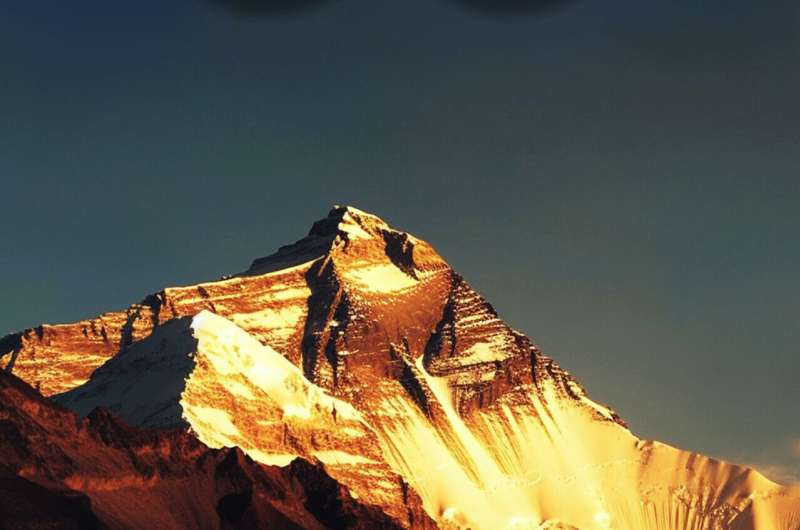This article has been reviewed according to Science X's editorial process and policies. Editors have highlighted the following attributes while ensuring the content's credibility:
fact-checked
peer-reviewed publication
proofread
New insights into the India–Asia collision in the Western Himalayas dating back to circa 55 million years

Hundreds of millions of years ago, the surface of the Earth looked very different from how we see it today. There were just two continents: Laurasia and Gondwanaland. The present Indian subcontinent was part of Gondwanaland, which broke up about 150 million years ago.
A part of the Indian Plate that broke away from the Gondwana supercontinent is now subducted under the Himalayas and the Tibetan Plateau. Understanding the original extent of the 'lost' part of this continent, called Greater India, is therefore important to resolve several key questions surrounding the age of the India–Asia collision and answer how and when the Tibetan Plateau got built.
However, estimates of the extent of Greater India have remained uncertain, varying from 100's to more than 2,000 km. The Sangdanlin section lying between the Indian and Asian plates in southern Tibet represents a geologic Rosetta stone to constrain the initiation of the India–Asia collision; however, divergent evidence regarding its age and paleomagnetic record has made the estimation challenging.
Providing key answers, researchers from China University of Geosciences (Beijing) (CUGB) along with colleagues from other institutions, including Ludwig Maximilians University and Chinese Academy of Sciences, have now clarified that Greater India was a single plate of 2,000 to 3,000 km before it subducted under Asia.
Professor Jun Meng from the School of Earth Sciences and Resources, CUGB, the first author of the study that was published in Proceedings of the National Academy of Sciences explains, "There are two primary models for the India–Asia collision. The first is a multistage collision model that subdivides the oceanic basin at the leading edge of India into smaller plates that were later incorporated into the Asian plate."
"The second model says that India and Greater India existed as a single plate in the Early Cretaceous period, with the upper crust of the northern margin of Greater India forming the Himalayan thrust belt and the lower crust being subducted under Asia." His colleague from CUGB, Professor Chengshan Wang adds, "Our goal was to understand which of these models was more accurate."
The researchers resolved several questions surrounding these issues through a combined geologic, palaeontologic, and paleomagnetic study of the infamous Sangdanlin section. The paleomagnetism of the Cretaceous rocks allowed the researchers to track the geographical position of the northern sector of the Indian Plate through time and calculate a minimum size for Greater India.
The data obtained in the study showed that the lithosphere— the rocky outer shell of the Earth—consumed by subduction since the onset of the collision 55 mya was larger than the area of the Indian subcontinent today and originally extended ~2,000 to 3,000 km to the north. Consequently, almost 5 million km2 of lithosphere has been subducted under the Asian Plate, which must have contributed to the rise of the Tibetan Plateau.
These findings represent a tectonic shift in our understanding of the India–Asia collision and the emergence of various geological structures in these regions.
Prof. Stuart A. Gilder from Ludwig Maximilians University observes, "Our findings challenge established notions of the formation of Asia's southern margin through the coalescence of independent tectonic blocks in the Tethys Ocean. They could help us fill the gap in the knowledge regarding the size of the Indian plate in a Gondwanaland configuration and the tectonic history of India up until its collision with Asia."
More information: Jun Meng et al, Strengthening the argument for a large Greater India, Proceedings of the National Academy of Sciences (2023). DOI: 10.1073/pnas.2305928120
Journal information: Proceedings of the National Academy of Sciences
Provided by Cactus Communications



















